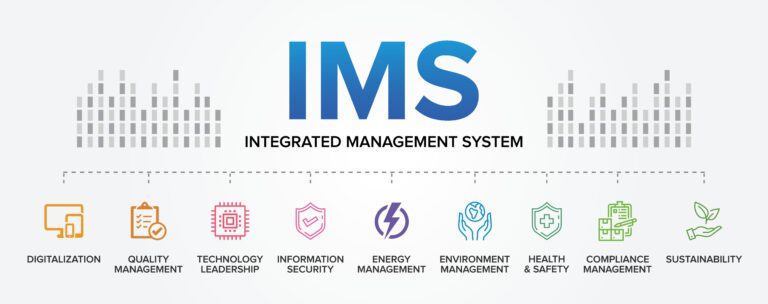Integrated Management System (IMS)

An integrated management system (IMS) is a unified approach to managing an organization’s processes, procedures, and policies. An IMS can include several management standards, such as ISO 9001, ISO 14001, and ISO 45001, among others.
ISO, or the International Organization for Standardization, is an independent, non-governmental international organization that develops and publishes standards to promote best practices and improve the quality, safety, and efficiency of products and services worldwide. An ISO-integrated management system combines two or more ISO management standards into a single, cohesive system that provides a framework for managing all aspects of an organization’s operations.
Benefits of an ISO Integrated Management System
There are several benefits of implementing an ISO-integrated management system, including:
- Improved efficiency: An IMS provides a framework for managing an organization’s processes, procedures, and policies in a streamlined and efficient manner. This can result in cost savings, increased productivity, and improved customer satisfaction.
- Enhanced risk management: An IMS can help an organization identify and manage risks across all areas of its operations, including quality, environmental, and occupational health and safety. This can help mitigate potential negative impacts and improve overall resilience.
- Simplified compliance: By combining multiple management standards into a single system, an IMS can help an organization simplify its compliance requirements and reduce the administrative burden associated with managing multiple standards.
- Improved stakeholder engagement: An IMS can help an organization demonstrate its commitment to quality, environmental, and occupational health and safety to stakeholders such as customers, suppliers, employees, and regulators.
Implementing an ISO Integrated Management System
Implementing an IMS involves several steps, including:
- Determine the scope: Identify the areas of the organization that will be included in the IMS, and which ISO management standards will be integrated.
- Develop a plan: Develop a detailed project plan that includes timelines, milestones, and responsibilities.
- Conduct a gap analysis: Identify any gaps between the organization’s current management systems and the requirements of the ISO standards to be included in the IMS.
- Develop and implement a system: Develop and implement an integrated management system that addresses the requirements of all relevant ISO standards.
- Train employees: Ensure that all employees are trained on the IMS and understand their roles and responsibilities.
- Monitor and review: Monitor the IMS to ensure it remains effective and efficient, and conduct regular reviews to identify areas for improvement.
Conclusion
An ISO-integrated management system can help organizations streamline their processes, improve efficiency, enhance risk management, and simplify compliance requirements. Implementing an IMS involves several steps, including determining the scope, developing a plan, conducting a gap analysis, developing and implementing a system, training employees, and monitoring and reviewing the system. By following these steps, organizations can create a unified approach to managing their operations that can help improve performance and enhance stakeholder engagement.
